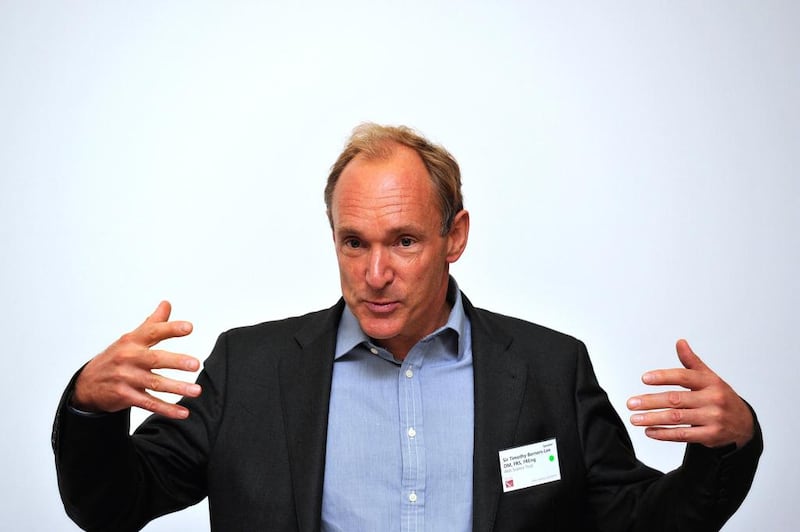It was 1995 and my first day on work experience at a telecoms company. On the sixth floor in the far corner there was a computer connected to “The Internet”. I’ll never forget logging on for the first time.
Back then, it was a creaky, slow and mostly monochrome thing. It could only be accessed by a dial-up modem attached to a fixed computer at the painful speed of 14.4K. The first public website had gone live five years earlier, hosted at CERN and published by Tim Berners-Lee – it was the start of the world wide web as we know it.
Half of the current global population is under 30. They are digital natives, people who have never known life without the internet. When I logged on, using that clunky office computer, there were only 23,500 websites and around 40 million users. Today, there are 1.6 billion websites and 4 billion people.
In the intervening three decades, we have moved far from the open and optimistic online environment that many initially imagined – so much so that Mr Berners-Lee recently published a letter about reclaiming the web from the forces of darkness.
He has highlighted criminal activities, government interference and the spread of bigotry and hate as primary problems. Governments, he says, “have a responsibility to protect people’s rights and freedoms online.” As for companies, they must do more “to ensure their pursuit of short-term profit is not at the expense of human rights, democracy, scientific fact or public safety.”
Mr Berners-Lee is right to highlight these big issues. But it is in the grey spaces of culture, where social norms have shifted dramatically, that regaining control and shaping what Mr Berners-Lee calls “the web we want” is going to be hardest.
The digital and real worlds are seamlessly integrated in the lives of those under 30, and young people's identities are very much defined by social media culture. This means that the necessary changes are not just commercial, technological or related to law. We need to fundamentally change our culture and ourselves.
We are only just beginning to learn about the impact of constant online connection on mental health. Studies have recently linked overreliance on social media to alarming rises in depression, anxiety and self-harm. Earlier this week, Justin Bieber posted on Instagram about his struggles with depression.
The irony is that multiple studies suggest that image-based social media platforms have the most detrimental effects on mental health. Some examples of this are extreme. Last month, graphic images of self-harm and suicide which were linked to the death of the British teenager Molly Russell.

However, many of their pernicious effects are more understated. Consider the phenomenon of “Instagram envy”. That particular platform is famous for its influencers – people who present posed pictures of their perfect lives as a career to audiences of thousands. Travel hotspots have emerged from their posts. Restaurants gain their reputations from a well-liked image. High-street fashion lines sell out in minutes after a high-profile endorsement.
Apparently, young people are seeing social media influencing as a legitimate career, alongside more traditional options such as becoming a lawyer, a teacher or a nurse. Some influencers make fortunes, via book deals sponsorship deals and other forms of monetisation. Most who try don’t. If you’re not one of the lucky few, emulating this glossy lifestyle costs a vast amount of money – money that that most young people these days just don’t have.
Growing up and establishing a life and identity for yourself is hard enough, without having to live up to the unrealistic and unrealisable expectations of people you don't even know. Being perfect and being popular are addictive. Today's social media apps, with their "like" buttons and flattering camera filters, have been designed to make us fixate on both. Changing this won't be easy. But, as Mr Berners-Lee says, "if we dream a little and work a lot, we can get the web we want".
Shelina Janmohamed is the author of Love in a Headscarf and Generation M: Young Muslims Changing the World





